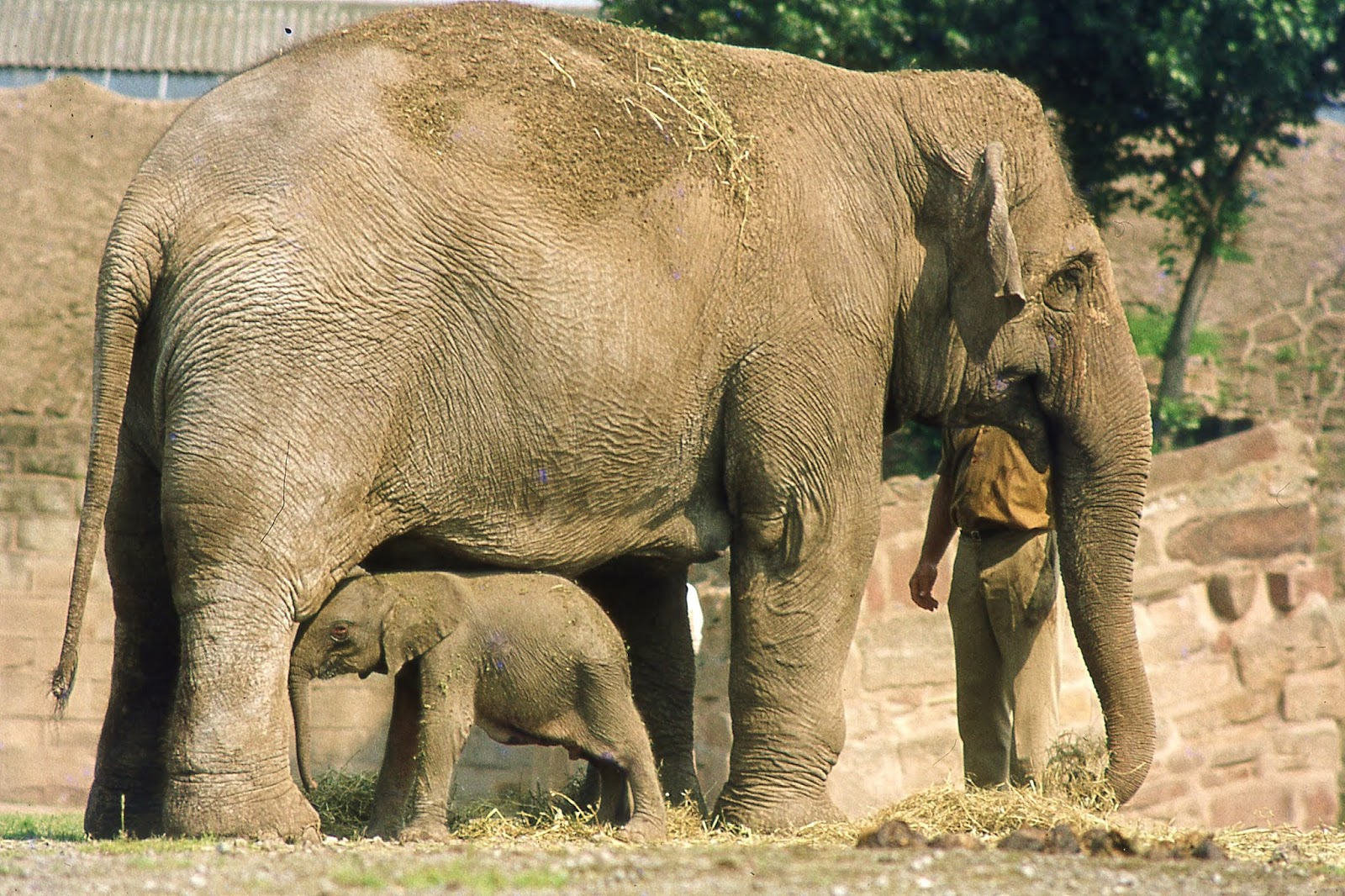Dearest Motty: The World’s Only Hybrid Elephant
On the rarest of occasions there comes into existence a specific organism that can truly be said to be genetically one-of-a-kind, possessing a unique attribute or history that we can say with near confidence has never occurred before and might never again. All the more surprising is when this occurs despite what we had assumed to be impossible. This is the story of a wee elephant like none other, who stunned the zoological community with his mere existence.
Chester Zoo in England, founded in 1931, has long been
called one of the greatest zoological gardens on Earth, with an impressive
plethora of exhibits and a world-class conservation program. Dozens of
elephants have called the zoo home over the decades since the opening of the
elephant exhibit in 1941. One of these was Motty, the only known hybrid being
an Asian Elephant (Elephas maximus) and an African Bush Elephant (Loxodonta Africana).
As the two species are in different genera, it was presumed that the two could
never procreate. In fact, Asian elephants are more closet related to the
extinct mammoths than they are to their African kin.
The parents of Motty were Sheba, an Asian female, and Jumbolino,
an African male. When Sheba first displayed signs of pregnancy, zoo staff were
certain that it had to be something else. While she had been observed mating
with Jumbolino, the possibility of hybridization was deemed ludicrous at the
time. Nevertheless, as the months went along and more signs occurred, it became
impossible to deny the surprising truth. On July 10, 1978, Sheba prematurely
gave birth to Motty in front of her keepers. It was estimated that Motty had
been born six weeks ahead of schedule, he had a scrawny, small appearance. Due
to his early arrival, his mother was not yet producing milk, forcing zoo staff
to feed him with a bottle.
Motty and Sheba, photograph taken by elephant keeper Dave
Hayes. There aren’t many pictures of Motty.
Motty was named after the late George Mottershead, the
founder of Chester Zoo. Mottershead was very much a revolutionary when it came
to zoo design, making habitats that lacked the cold, prisonlike bars that were
commonplace at the time in the 1930s.
Sadly, Motty’s story ended early and tragically. On July 21,
zookeepers found him comatose and rapidly fading. Zoo doctors did all they
could, but it wasn’t enough and an hour later little Motty was dead. Motty had
perished of necrotizing enterocolitis and e. coli septicaemia, not unlike what
can kill premature human babies.
Despite the unusual nature of Motty, his life received very
little interest. Sam Whitbread wrote that:
"…the coverage by scientific journals was significant
by its absence. Here was an animal the like of which had never been seen before
and, it is almost certain, will never be seen again. Indeed, it was almost as
though the world of science had chosen to turn its back on this unique event
and ignore that the impossible had occurred. Specialist elephant journals and
publications did recognize the birth for what it was but the International Zoo
Yearbook merely made a casual mention of the birth in their reference section
and IZN only carried a brief note."
Motty’s remains were taxidermized and are currently kept in storage at the British Museum of Nature History, where they remain in obscurity and darkness.



Comments
Post a Comment